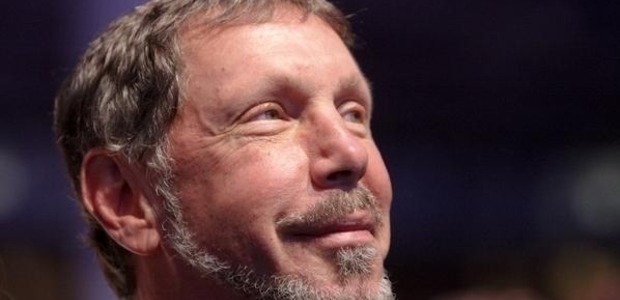advertisement
Oracle CEO Larry Ellison turns 70 with no retirement in sight
Most people start thinking about retirement when they turn 70, if they haven’t already called it a career. Not Oracle…

Most people start thinking about retirement when they turn 70, if they haven’t already called it a career. Not Oracle CEO Larry Ellison, who passed that milestone Sunday.
“He sure doesn’t appear to be ready to retire,” said analyst Frank Scavo, managing partner of IT consulting firm Strativa. “I suppose technically he has to be drawing Social Security at this point. That has to be something, a check coming in the mail each month made out to Larry Ellison for $933,” Scavo joked of Oracle’s billionaire co-founder, who is one of the world’s richest people.
Ellison looked hale, hearty and engaged in recent public appearances, such as the launch of Oracle’s new in-memory option for its flagship database. If he were to have a sudden health crisis preventing him from working, there would likely be a short-term reaction from the stock market, Scavo said. However, “Oracle has an extremely deep bench in terms of talent,” he added.
advertisement
The CEO’s top lieutenants include co-presidents Mark Hurd and Safra Catz, as well as product development chief Thomas Kurian. Speculation has swirled for years about whether Ellison has tapped a leader to succeed him, or has another type of plan in place.
An Oracle spokeswoman declined to comment on the topic or make Ellison available for an interview.
Of course, Ellison has plenty going on in his life apart from Oracle. Last year,his sailing team won the America’s Cup and surely will defend the crown at some point. Ellison is also working on a variety of projects on Lanai, the Hawaiian island he bought in 2012 for reportedly more than US$500 million.
advertisement
The presence of executives such as Hurd, Catz and Kurian means Ellison can leave the company’s day-to-day operations to them while focusing on Oracle’s big-picture strategy.
And indeed Ellison does. He chairs Oracle’s three major weekly product meetings and is said to spend days working on his keynote presentations, closely watched affairs in which he typically unveils new products and lays out Oracle’s future plans.
The next of these will come next month during Oracle’s massive OpenWorld conference, where a big focus is expected to be on the vendor’s move into all aspects of cloud computing, from IaaS (infrastructure as a service) to PaaS (platform as a service) to SaaS (software as a service) applications.
advertisement
Oracle has made a number of acquisitions to build out its cloud portfolio and is also pushing its homegrown Fusion Applications, which can be run in SaaS form. While Oracle has declared itself the industry’s second-largest cloud vendor after Salesforce.com, it remains largely in transition from its traditional on-premises software business.
Managing this shift appears to be the biggest task on Ellison’s plate over the next several years.
“They certainly have been challenged by the migration to the cloud, and by all accounts were late to the party,” Scavo said.
“The problem Oracle has with doing so many acquisitions is that these many solutions were not designed holistically, and are at best interfaced with one another and not tightly integrated,” Scavo added. When Oracle competes for a cloud software suite deal, they must present a “hodge-podge of solutions cobbled together,” he said.
To this end, it would be a major mistake for Ellison to make a major cloud vendor acquisition, such as of Salesforce.com or Workday, Scavo added.
Beyond applications, Oracle has to play major catch up in the cloud on PaaS and IaaS, in the view of Forrester Research analyst John Rymer.
“When we talk to folks using Java in the cloud they’re using CloudBees or Amazon Web Services,” Rymer said. “I’m sure there are people who are using [Oracle’s Java-based PaaS service], but we just never see it. For me, if something’s really catching on, I hear about it from clients.”
Oracle also has to grapple with a shift away from its current sales model, Rymer said. Cloud services are typically sold by subscription, while the bulk of Oracle’s revenue today is comprised of upfront software license fees and annual maintenance payments, the latter of which carry extremely high profit margins.
Unlike Scavo, Rymer expects Oracle to make more acquisitions to bolster its push into the cloud. Oracle, IBM, SAP and other large vendors “manage cash cow products, but they’re really not very good at innovation,” he said.
In any event, when Ellison does finally hand off the reins, “I think who he chooses as a replacement will drive what his legacy looks like,” said analyst Ray Wang, chairman and founder of Constellation Research.
Someone like Oracle’s long-time chief corporate architect Edward Screven would be a “formidable force” as CEO from a technology perspective, Wang said. Hurd, a former Hewlett-Packard CEO and close friend of Ellison’s, has been eyed as a potential successor since coming aboard in 2010. Catz’s name has come up frequently as well.
Whatever happens, Ellison “is not an easy person to replace,” Wang said. “The job could be too big for one person.”